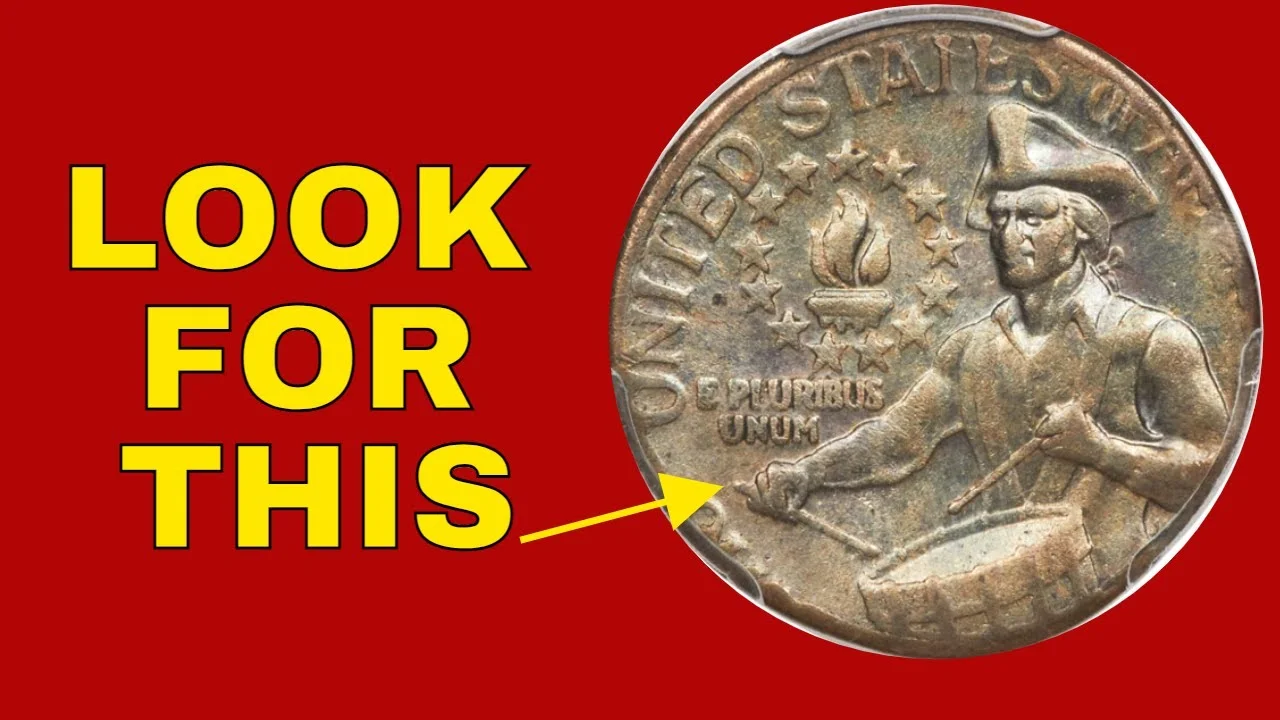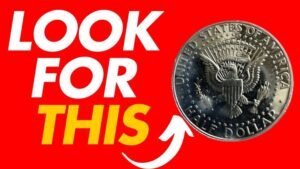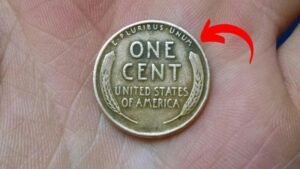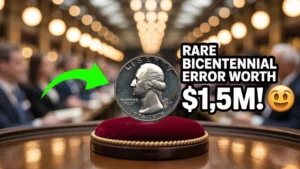Imagine finding a quarter in your pocket worth $2.5 billion. Sounds like a fantasy, right? Yet, whispers of a rare 1976 Bicentennial Quarter, still hiding in circulation, have coin collectors buzzing with excitement. This isn’t just pocket change—it’s a numismatic legend. Read on to uncover the mystery and learn how to spot this treasure!
What Is the Rare Bicentennial Quarter?
The 1976 Bicentennial Quarter is no ordinary coin. Minted to celebrate America’s 200th birthday, it boasts a unique design: a colonial drummer on the reverse and a dual date, “1776-1976,” on the obverse. While millions were made, a few ultra-rare versions could be worth a fortune. Could one be hiding in your change jar?
The Fascinating History of the Bicentennial Quarter
In 1975 and 1976, the U.S. Mint released special quarters to mark the bicentennial of American independence. Unlike standard quarters with an eagle, these feature a drummer boy, designed by Jack L. Ahr, symbolizing the Revolutionary War. Over 1.6 billion were minted, but rare errors and unique compositions sparked a modern treasure hunt.
The Mint produced these coins in three locations: Philadelphia (P), Denver (D), and San Francisco (S). Most were copper-nickel clad, but some San Francisco coins were 40% silver. Rumors swirl of a one-of-a-kind quarter, possibly struck on a gold planchet or with a dramatic error, fueling the $2.5 billion legend.
Why This Quarter Is Worth Billions
The $2.5 billion valuation is jaw-dropping but unverified. Experts at the Professional Coin Grading Service (PCGS) and American Numismatic Association (ANA) say no such coin has been authenticated. Yet, rare Bicentennial Quarters with errors—like double dies or off-center strikes—can fetch thousands. A 1976-S Silver Proof sold for $19,200 in 2019.
The legend likely stems from viral social media claims, possibly about a coin struck on an experimental metal or a unique error. While $2.5 billion is speculative, the thrill of finding a rare variant keeps collectors hooked. These coins are valuable for their history, rarity, and the dream of a life-changing find.
Valuable Bicentennial Quarter Variants
| Variant | Description | Estimated Value | Notes |
|---|---|---|---|
| 1976-S Silver Proof | 40% silver, San Francisco mint | $10–$19,200 | High-grade examples are rare |
| Double Die Obverse | Doubled text or design | $100–$8,400 | Look for blurred lettering |
| Off-Center Strike | Misaligned design | $50–$250 | Value depends on error severity |
| Clad Regular Strike | Copper-nickel, no errors | $0.25–$6,463 | High-grade MS-67+ are valuable |
How to Spot a Valuable Bicentennial Quarter
You don’t need to be a numismatist to hunt for this treasure. Check your change for these telltale signs:
- Mint Mark: Look for an “S” (San Francisco) below Washington’s neck. These may be 40% silver.
- Weight: Silver quarters weigh 5.75 grams; clad ones are 5.67 grams.
- Errors: Use a magnifying glass to spot double dies, misalignments, or odd colors.
- Condition: Pristine, uncirculated coins (MS-67 or higher) are worth more.
Take any suspicious coin to a professional appraiser. Don’t clean it—cleaning reduces value! Store it in a plastic sleeve and consult a numismatic expert. You might just have a gem worth thousands.
Mind-Blowing Facts About Bicentennial Quarters
- Massive Mintage: Over 1.6 billion were minted, making them common—yet rare variants exist.
- Silver Rarity: Only 9 million were 40% silver, mostly in collector sets.
- Error Goldmine: A double-die obverse sold for $8,400 in 2023.
- Myth vs. Reality: No $2.5 billion quarter has been verified, but the rumor fuels excitement.
- Presidential Gift: A few silver proofs were struck for President Gerald Ford, their whereabouts unknown.
Bicentennial Quarter Mintage by Mint
| Mint Location | Mintage (Millions) | Composition | Notable Features |
|---|---|---|---|
| Philadelphia (P) | 809 | Copper-Nickel | No mint mark |
| Denver (D) | 860 | Copper-Nickel | “D” mint mark |
| San Francisco (S) | 11 | 40% Silver | “S” mint mark, proof sets |
Expert Tips for Coin Collectors
Ready to dive into numismatics? Here’s insider advice to boost your treasure hunt:
- Learn the Lingo: Study mint marks, die varieties, and grading scales (e.g., MS-67).
- Join Communities: Connect with collectors on forums like Reddit’s r/coins or ANA groups.
- Check Everywhere: Search coin rolls, estate sales, or antique shops for hidden gems.
- Use Tools: A magnifying glass and precision scale are must-haves for spotting errors.
- Stay Skeptical: Beware of clickbait claims about billion-dollar coins. Verify with PCGS or NGC.
Frequently Asked Questions
Is there really a $2.5 billion Bicentennial Quarter?
No verified coin exists at that value. The figure is likely an online myth, but rare variants can be worth thousands.
How do I know if my quarter is valuable?
Check for an “S” mint mark, weigh it, and look for errors like double dies. Consult a professional appraiser.
Are all Bicentennial Quarters rare?
No, most are worth 25 cents. Only error coins or high-grade silver proofs are valuable.
Where can I sell a rare quarter?
Try online auctions (eBay, Heritage Auctions), coin dealers, or numismatic societies.
Why is the Bicentennial Quarter special?
Its unique drummer boy design and dual date celebrate America’s 200th anniversary, making it a collector’s favorite.
Conclusion: Start Your Treasure Hunt Today
The tale of a $2.5 billion Bicentennial Quarter may be a numismatic myth, but the hunt for rare variants is very real. These coins, with their iconic drummer boy design, connect us to America’s history and the thrill of discovery. Next time you get change, take a closer look—you might uncover a hidden treasure worth thousands. Start checking your quarters, join a coin-collecting community, or share this article with friends. The next big find could be yours!



